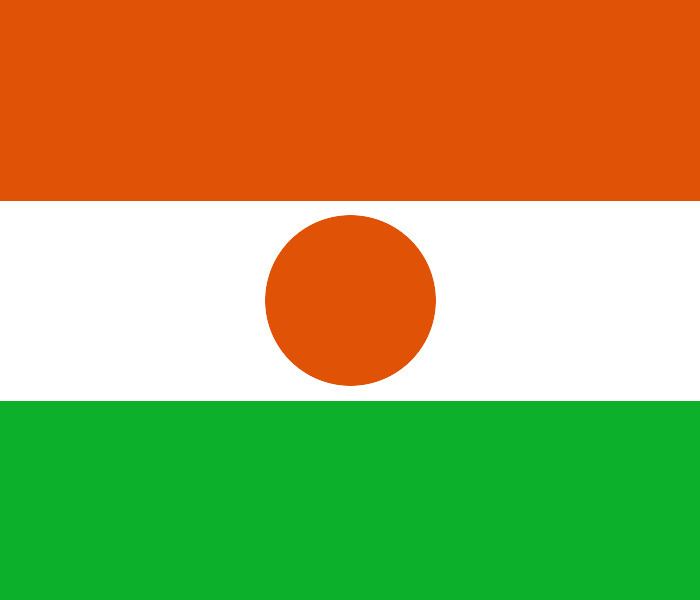Population 17.83 million (2013) Population growth rate 3.8% annual change (2013) | Life expectancy 57.97 years (2012) GNI per capita 890 PPP dollars (2013) | |
 | ||
Fertility rate 7.57 births per woman (2012) | ||
This article is about the demographic features of the population of Niger, including population density, ethnicity, education level, health of the populace, economic status, religious affiliations and other aspects of the population.
Contents
- Map of Republic of Niger
- Population
- UN estimates
- Vital statistics
- Fertility and births
- CIA World Factbook demographic statistics
- Sex ratio
- Life expectancy at birth
- Nationality
- Ethnic Groups
- Religions
- Languages
- Literacy
- References
Map of Republic of Niger
The largest ethnic groups in Niger are the Hausa, who also constitute the major ethnic group in northern Nigeria, and the Zarma Songhay (also spelled Djerma-Songhai), who also are found in parts of Mali. Both groups are sedentary farmers who live in the arable, southern tier. The Kanouri (including Beri Beri, Manga) make up the majority of sedentary population in the far southeast of the nation. The remainder of the Nigerien people are nomadic or seminomadic livestock-raising peoples—Tuareg, Fulani, Toubou and Diffa Arabs. With rapidly growing populations and the consequent competition for meager natural resources, lifestyles of these two types of peoples have come increasingly into conflict in Niger in recent years.
Niger's high infant mortality rate is comparable to levels recorded in neighboring countries. However, the child mortality rate (deaths among children between the ages of 1 and 4) is exceptionally high (274 per 1,000) due to generally poor health conditions and inadequate nutrition for most of the country's children. Niger's very high total fertility rate (6.89 children born per woman, which is the highest in the world), nonetheless, means that nearly half (49%) of the Nigerien population is under age 15. School attendance is low (34%), including 38% of males and 27% of females. Additional education occurs through Koranic schools.
Population
Source: Institut National de la Statistique - Niger
UN estimates
According to the 2010 revision of the World Population Prospects the total population was 15 512 000 in 2010, compared to only 2 462 000 in 1950. The proportion of children and teenagers below the age of 15 in 2010 was 49%, 48.8% was between 15 and 65 years of age, while only 2.2% was 65 years or older.
Vital statistics
Registration of vital events in Niger is incomplete. The Population Departement of the United Nations prepared the following estimates.
Fertility and births
Total fertility rate (TFR; Wanted Fertility Rate) and crude birth rate (CBR):
Fertility data as of 2012 (DHS Program):
CIA World Factbook demographic statistics
The following demographic statistics are from the CIA World Factbook, unless otherwise indicated.
Sex ratio
at birth: 1.03 male(s)/female
younger than 15 years: 1.02 male(s)/female
15–64 years: 0.99 male(s)/female
65 years and over: 0.8 male(s)/female
total population: 1 male(s)/female (2010 est.)
Life expectancy at birth
total population: 52.6 years
male: 51.39 years
female: 53.85 years (2010 est.)
Nationality
noun: Nigerien(s)
adjective: Nigerien
